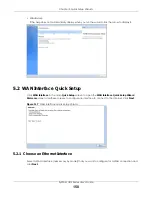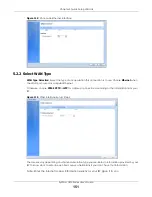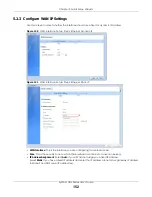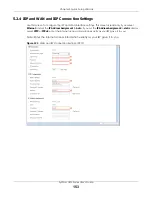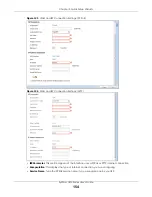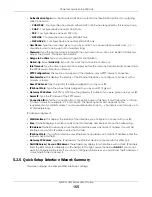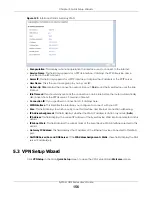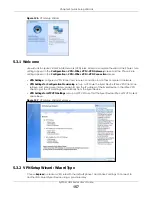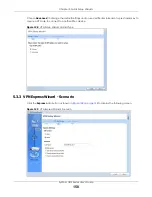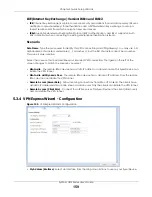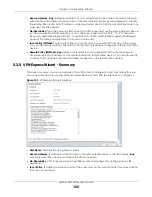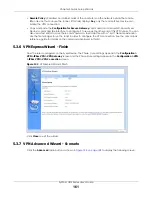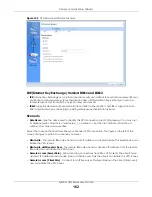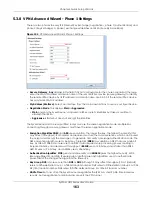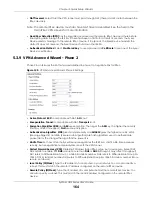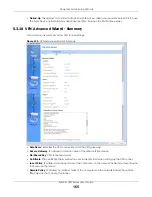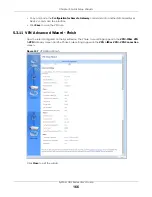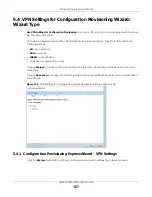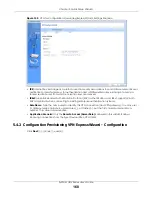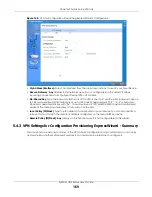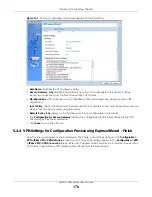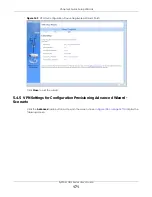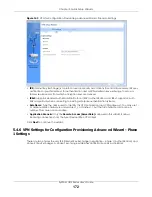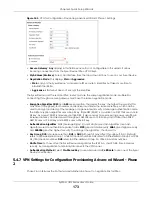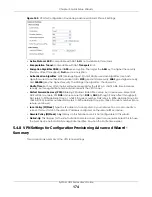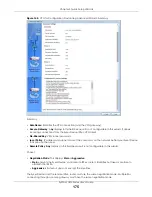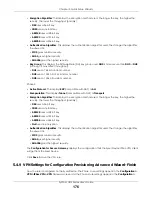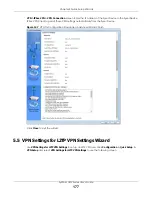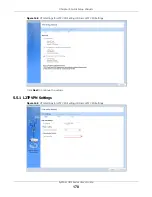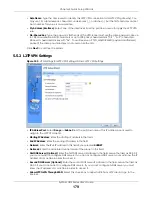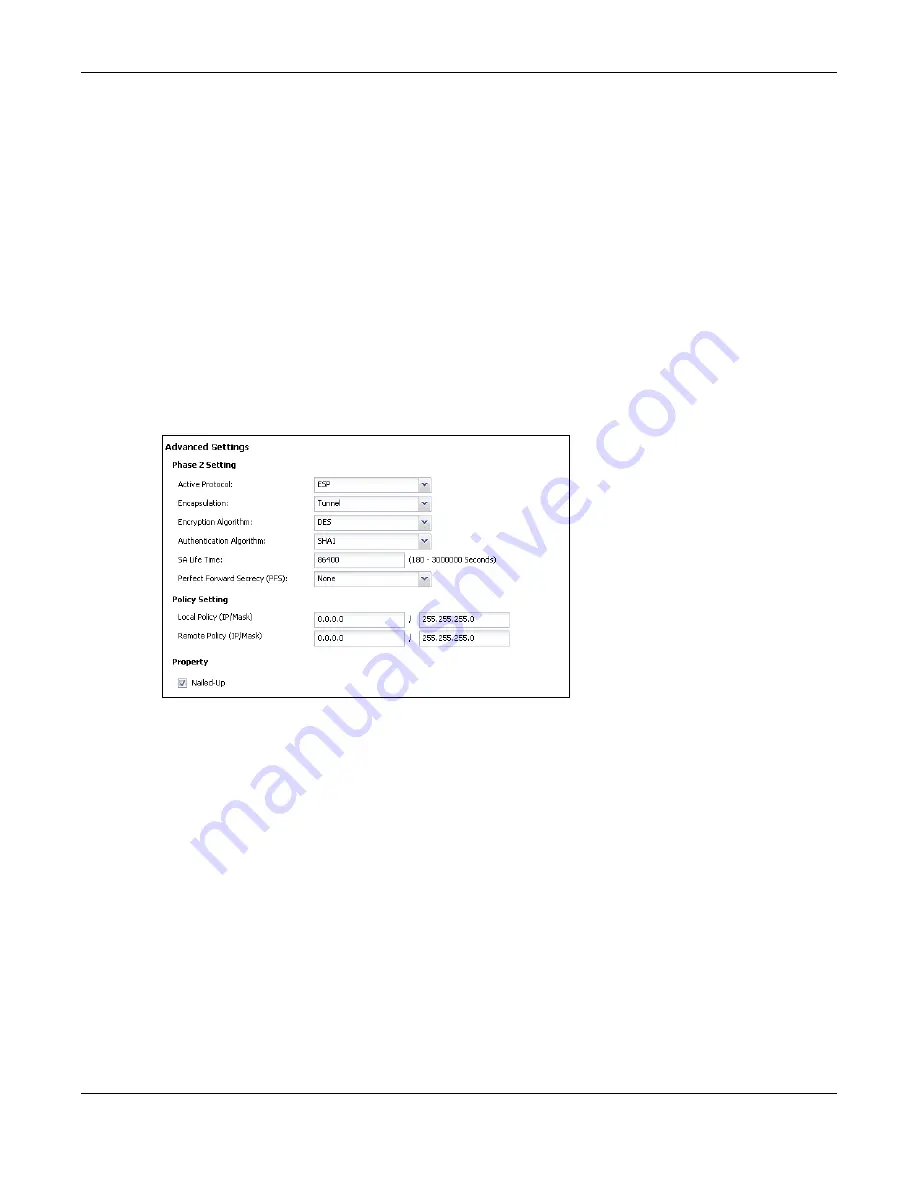
Chapter 5 Quick Setup Wizards
ZyWALL USG Series User’s Guide
164
•
NAT Traversal
: Select this if the VPN tunnel must pass through NAT (there is a NAT router between the
IPSec devices).
Note: The remote IPSec device must also have NAT traversal enabled. See the help in the
main IPSec VPN screens for more information.
•
Dead Peer Detection (DPD)
has the Zyxel Device make sure the remote IPSec device is there before
transmitting data through the IKE SA. If there has been no traffic for at least 15 seconds, the Zyxel
Device sends a message to the remote IPSec device. If it responds, the Zyxel Device transmits the
data. If it does not respond, the Zyxel Device shuts down the IKE SA.
•
Authentication Method
: Select
Pre-Shared Key
to use a password or
Certificate
to use one of the Zyxel
Device’s certificates.
5.3.9 VPN Advanced Wizard - Phase 2
Phase 2 in an IKE uses the SA that was established in phase 1 to negotiate SAs for IPSec.
Figure 135
VPN Advanced Wizard: Phase 2 Settings
•
Active Protocol
:
ESP
is compatible with NAT,
AH
is not.
•
Encapsulation
:
Tunnel
is compatible with NAT,
Transport
is not.
•
Encryption Algorithm
:
3DES
and
AES
use encryption. The longer the
AES
key, the higher the security
(this may affect throughput).
Null
uses no encryption.
•
Authentication Algorithm
:
MD5
gives minimal security and
SHA512
gives the highest security. MD5
(Message Digest 5) and SHA (Secure Hash Algorithm) are hash algorithms used to authenticate
packet data. The stronger the algorithm the slower it is.
•
SA Life Time
: Set how often the Zyxel Device renegotiates the IKE SA. A short SA life time increases
security, but renegotiation temporarily disconnects the VPN tunnel.
•
Perfect Forward Secrecy (PFS)
: Disabling PFS allows faster IPSec setup, but is less secure. Select DH1,
DH2 or DH5 to enable PFS.
DH5
is more secure than
DH1
or
DH2
(although it may affect throughput).
DH1 refers to Diffie-Hellman Group 1 a 768 bit random number. DH2 refers to Diffie-Hellman Group 2 a
1024 bit (1Kb) random number. DH5 refers to Diffie-Hellman Group 5 a 1536 bit random number (more
secure, yet slower).
•
Local Policy (IP/Mask)
: Type the IP address of a computer on your network. You can also specify a
subnet. This must match the remote IP address configured on the remote IPSec device.
•
Remote Policy (IP/Mask)
: Type the IP address of a computer behind the remote IPSec device. You
can also specify a subnet. This must match the local IP address configured on the remote IPSec
device.
Summary of Contents for USG110
Page 27: ...27 PART I User s Guide ...
Page 195: ...195 PART II Technical Reference ...
Page 309: ...Chapter 10 Interfaces ZyWALL USG Series User s Guide 309 ...
Page 313: ...Chapter 10 Interfaces ZyWALL USG Series User s Guide 313 ...
Page 358: ...Chapter 10 Interfaces ZyWALL USG Series User s Guide 358 ...
Page 373: ...Chapter 10 Interfaces ZyWALL USG Series User s Guide 373 ...

